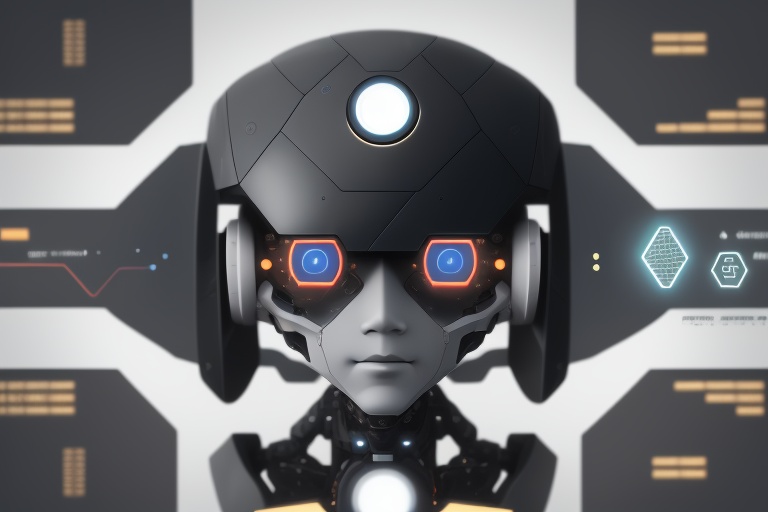The prevalence of digital technology has significantly heightened the odds of cyber-attacks. Threats such as undetected malware and vicious online tactics place individuals and organizations in a precarious position, necessitating advanced cybersecurity measures. Amidst this onslaught of digital threats, Artificial Intelligence (AI) emerges as both an ally and potential tool for adversaries. Therefore, it is vital for businesses and individuals to implement robust cybersecurity strategies to safeguard their data systems against breaches.
The Role of AI in Cybersecurity: Adapting to the Digital Age
The prevalence of digital technology has significantly heightened the odds of cyber-attacks. Threats such as undetected malware and vicious online tactics place individuals and organizations in a precarious position, necessitating advanced cybersecurity measures. Amidst this onslaught of digital threats, Artificial Intelligence (AI) emerges as both an ally and potential tool for adversaries. Therefore, it is vital for businesses and individuals to implement robust cybersecurity strategies to safeguard their data systems against breaches.
Artificial Intelligence is reinventing the scope of cybersecurity, providing unparalleled capabilities that enable organizations to predict and neutralize cyber threats with remarkable accuracy. From machine learning algorithms to automation tools, AI has woven itself into the fabric of cybersecurity software, empowering businesses to preemptively counteract evolving threats and secure their confidential data.
Deciphering AI Security Tools: A Selection Guide
When considering AI security tools, it is important to understand their fundamental features and how these can fortify the digital defenses of a business.
AI-Driven Threat Intelligence
A preeminent advantage of AI in cybersecurity is its provision of threat intelligence. Sophisticated algorithms are capable of detecting patterns and anomalies that could signify a cyber threat. Through this analysis, companies can remain vigilant and prepare against possible assaults. AI's real-time response to threats not only mitigates their impact but also significantly diminishes the odds of data breaches or system disruptions.
Error Prevention through AI
Human errors are often the unforeseen backdoors through which cybercrimes find success. Whether it's a malicious link clicked in haste or an infected file unwittingly downloaded, these actions can compromise an entire network. AI's proactive stance on security can quell these risks. With automated detection systems that block suspicious activities, issue real-time alerts, and enforce security policies, these systems aim to minimize the chance of employee-induced errors.
Automation of Cybersecurity Tasks
The burgeoning complexity and frequency of cyber threats render manual security event analysis impractical. AI systems excel in automating these repetitive tasks, sorting through events, flagging potential threats, and taking preemptive action to contain and neutralize them. This automation allows human cybersecurity professionals to concentrate on intricate tasks that demand a higher level of strategic thinking and innovation.
Enhanced Incident Response
The capability of AI to bolster incident response is invaluable. By perpetually monitoring network traffic, user behaviors, and system logs, AI can identify and act upon threats swiftly. This offers organizations the ability to respond promptly, lessening the impact of attacks and staving off further damage.
Despite AI's impressive capabilities, it's no panacea. It's simply one instrument in a more extensive cybersecurity toolkit that should complement traditional methods, like robust passwords, multi-factor authentication, timely software updates, and comprehensive employee training sessions. It is also worth noting that AI systems are not impeccably secure and may themselves have vulnerabilities that clever attackers could potentially exploit.
In pursuit of a secured digital presence, businesses must remain agile, continuously refining their cybersecurity strategies to counteract increasingly sophisticated threats. As the digital landscape evolves, so too must the defensive measures of those who navigate it.
Staying One Step Ahead: Proactive Cybersecurity
In a realm where cyber threats are constantly evolving, a proactive approach to cybersecurity is essential. AI tools serve as the avant-garde on this front, but they must be deployed judiciously and in tandem with established security practices. The continuous updating and enhancing of cybersecurity initiatives are pivotal for remaining apace with, if not a stride ahead of, adept adversaries in the digital era.
Through the judicious integration of AI into cybersecurity protocols, organizations can fortify their defenses and ensure a safer digital environment for their operations. By staying informed about the latest advancements in AI security tools, and by understanding their limitations and strengths, we can create a more secure future in this ever-connected world.
Information for this article was gathered from the following source.


